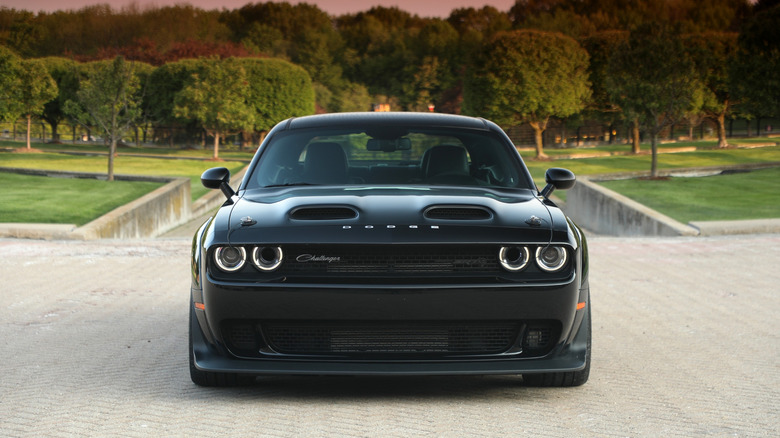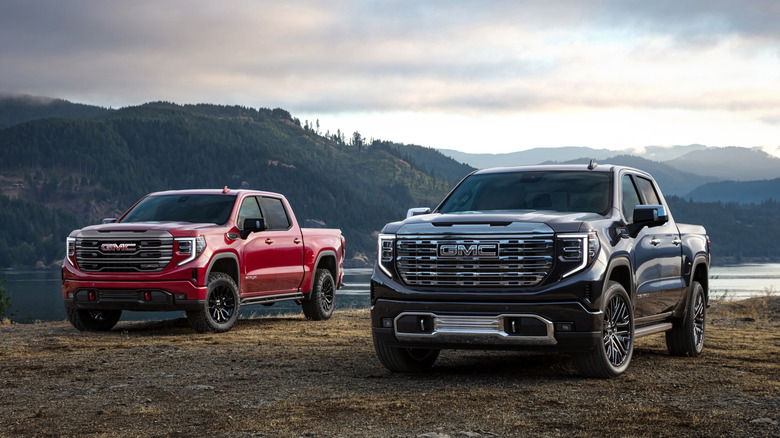Why Do American Cars Have Such Big Engines?
Picture a stereotypical car from each major division: American, European, and Asian. What sort of engine does each have? What about in the 1990s, the 1970s, 1950s, and before? Leaving aside more nuanced design sensibilities, the core elements of each car remain the same: an engine propels usually four wheels on a chassis down the road. But that core component, the engine, features some truly staggering size differences when taken at face-value.
Generally, most people associate American automotive design with a trend towards excess in one form or another. Take even a compact sports car, for instance. A Ford Mustang in its iconic 1965-1966 configuration featured a 4.7L 289 cubic-inch V8. By comparison, a Ford Capri of the same era had a 3.0L V6. An MGB GT: four-cylinder, Toyota 2000GT: straight-six, and so on. And this trend continues today; the most popular cars in America are consistently full-size light-duty trucks like the Ford F-series and Chevrolet Silverado, many of which have engines multiple times the size of the most popular cars in Japan, the UK, continental Europe, and elsewhere. Why, though?
Put simply, American cars have such big engines because the cars themselves are big in the first place. Americans have tried extremely small compacts, dating back to the Subaru 360, which was a commercial failure. Modern subcompacts and kei cars are far more capable, but lack the convenience and amenities of their larger counterparts that we've gotten used to in the States. Likewise, elsewhere in the world, they demand smaller cars to fit in tighter cities; hence why many have smaller engines as a result.
The rise and peak of the large-displacement powertrain in America
The Roaring Twenties marked a revolution in consumerist culture around the world, particularly in America, and the affordable automobile played a central role in the subsequent urban expansions. New cities cropped up that were vast distances apart, a capability only made possible with practical transportation infrastructure, and those cities could be designed to accommodate the automobile. Unlike cities in Europe and Asia dating back hundreds or thousands of years, with road networks optimized for pedestrians and horses, cars naturally required larger footprints. But the convenience an automobile afforded offset this detriment, and soon other countries developed their own mass-production cars, often smaller to accommodate the narrower road infrastructure since anything larger simply wouldn't fit.
In America, however, the Interstate highway grid was designed with larger cars and trucks in mind from the outset. This meant that it became practical to own full-size, comfort-oriented vehicles like the finned Cadillacs of the 1950s. This subsequently grew into the Muscle Era, with the renaissance of American motorsports culture, propelled by the universality of the American big-block engine.
The Muscle Era defined American automotive trends for arguably decades. After the 1973 Oil Crisis and environmental concerns, the U.S. faced an unprecedented challenge of reigning in this excess, though many companies staunchly retained their larger engines despite these new regulations. This culminated in the unique anachronism of the big-block engine alongside Japanese and European compacts, with many engines choked to an inch of their lives. For instance, the largest V8 fitted to an American car of the modern era, the 500 cubic-inch Cadillac, only produced 190 horsepower in 1976.
Why engines stayed large to this day
It took some time for the Malaise Era to wear off and large engines to make a definite comeback; American cars generally shrunk during the 1980s due to the environmental and economical requirements. But by the 2000s, proportions began growing larger across the board as engines got progressively more powerful and fuel-efficient, and the cars more luxurious. Larger vehicles soon regained the prestige they held; SUV and pickup truck culture reached a zenith in the 2000s, with luxury trucks like the Cadillac Escalade, Lincoln Navigator, and more, all of which featured large engines over 5 liters like the 5.7 Hemi, 5.4 Triton, etc. There's also the comparatively basic association of a bigger engine displacement being more prestigious. Today's full-size luxury cars and trucks market this as a selling point, with many brandishing the size of their engines in the model numbers themselves like BMW, Lexus, and Mercedes-AMG.
Concurrently, the mid-2000s saw the resurgence of the Muscle Era, with numerous revivals including the Camaro, Challenger, and Charger. Being muscle cars, most of these feature large V8s as part of their DNA. Car cultures of countries with widespread highway infrastructure like the United States and Australia favor these sorts of vehicles because "city-cars" simply aren't built for the Interstate system — bear in mind that the longest US highways stretch for over 3,000 miles. By contrast, Americans enjoy large SUVs and trucks for their smoothness, towing capacity, luxury, and demand big engines to move them quickly. Therefore, the reasoning is in-part both cultural and practical; big engines mean big prestige, but also big power to move big numbers of passengers and cargo with ease.


